
Twentynine Palms is a city in San Bernardino County, California. It serves as one of the entry points to Joshua Tree National Park.

The tradition of humor in Judaism dates back to the Torah and the Midrash from the ancient Middle East, but generally refers to the more recent stream of verbal and often anecdotal humor of Ashkenazi Jews which took root in the United States over the last hundred years, including in secular Jewish culture. European Jewish humor in its early form developed in the Jewish community of the Holy Roman Empire, with theological satire becoming a traditional way of clandestinely opposing Christianization.
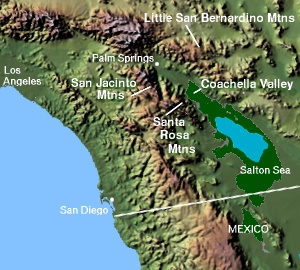
The Coachella Valley is an arid rift valley in the Colorado Desert of Southern California in Riverside County. The valley may also be referred to as Greater Palm Springs and the Palm Springs Area due to the prominence of the city of Palm Springs and disagreement over the name Coachella. The valley extends approximately 45 mi (72 km) southeast from the San Gorgonio Pass to the northern shore of the Salton Sea and the neighboring Imperial Valley, and is approximately 15 mi (24 km) wide along most of its length. It is bounded on the northeast by the San Bernardino and Little San Bernardino Mountains, and on the southwest by the San Jacinto and Santa Rosa Mountains.
"Morning Mood" is part of Edvard Grieg's Peer Gynt, Op. 23, written in 1875 as incidental music to Henrik Ibsen's play of the same name, and was also included as the first of four movements in Peer Gynt Suite No. 1, Op. 46.
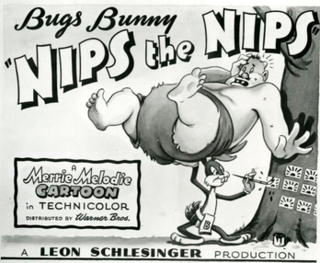
Bugs Bunny Nips the Nips is a 1944 Merrie Melodies cartoon directed by Friz Freleng. The cartoon, released on April 22, 1944, features Bugs Bunny. The film depicts Bugs fighting against the Imperial Japanese Army in the Pacific War. The film is considered controversial for caricaturing the Japanese enemy, and expressing anti-Japanese sentiment.
A gag cartoon is most often a single-panel cartoon, usually including a caption beneath the drawing. In some cases, dialogue may appear in speech balloons, following the common convention of comic strips. A pantomime cartoon carries no caption.
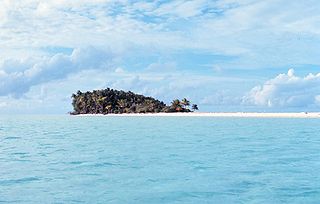
An uninhabited island, desert island, or deserted island, is an island, islet or atoll that is not permanently populated by humans. Uninhabited islands are often depicted in films or stories about shipwrecked people, and are also used as stereotypes for the idea of "paradise". Some uninhabited islands are protected as nature reserves, and some are privately owned. Devon Island in Canada's far north is the largest uninhabited island in the world.
Johnny Castaway is a screensaver released in 1992 by Sierra On-Line/Dynamix, and marketed under the Screen Antics brand as "the world's first story-telling screen saver".

A castaway is a person who is cast adrift or ashore. While the situation usually happens after a shipwreck, some people voluntarily stay behind on a desert island, either to evade captors or the world in general. A person may also be left ashore as punishment (marooned).

Akiva Daniel Shebar Schaffer is an American actor, filmmaker, comedian, and musician. He is a member of the comedy group The Lonely Island along with childhood friends Andy Samberg and Jorma Taccone. Schaffer began his career with The Lonely Island making videos for Channel 101. In 2005, Saturday Night Live hired the trio, with Schaffer joining as a writer. In their time at SNL, The Lonely Island pioneered the digital short format, creating some of the most popular sketches of all time, including "Lazy Sunday", "I Just Had Sex", "I'm on a Boat", and "Dick in a Box". After SNL, Schaffer went on to direct movies including Hot Rod, The Watch, Popstar: Never Stop Never Stopping, and Chip 'n Dale: Rescue Rangers. The Lonely Island has made albums such as Incredibad, Turtleneck & Chain, and The Wack Album. Schaffer also produced a number of TV shows and movies, some of which include MacGruber, PEN15, I Think You Should Leave with Tim Robinson, and Palm Springs.
"Move – and You're Dead" is an episode of Thunderbirds, a British Supermarionation television series created by Gerry and Sylvia Anderson and filmed by their production company AP Films for ITC Entertainment. Written and directed by Alan Pattillo, it was first broadcast on 10 February 1966 on ATV Midlands as the 20th episode of Series One. It is the ninth episode in the official running order.

Daffy Duck's Fantastic Island is a 1983 American animated anthology film directed by Friz Freleng and Phil Monroe with a compilation of classic Warner Bros. cartoon shorts and animated bridging sequences, hosted by Daffy Duck and Speedy Gonzales. This was the first Looney Tunes compilation film to center on Daffy Duck, as the previous ones had centered on Bugs Bunny. The premise of the framing animation was a general parody of the popular 1970s/1980s television series Fantasy Island, with Daffy Duck and Speedy Gonzales playing caricatures of that series' principal characters, Mr. Roarke and Tattoo (respectively).
Is My Palm Read is a 1933 Pre-Code Fleischer Studios animated short film starring Betty Boop, and featuring Koko the Clown and Bimbo.

The Desert Rat Scrap Book was a (roughly) quarterly, southwestern humor publication based in Thousand Palms, California. DRSB was published in editions of 10,000 to 20,000 copies, whenever its creator, Harry Oliver had sufficient material, and money enough to pay the printer. Forty-six issues were printed and distributed via Southern California bookstores and newsstands, and by mail worldwide. DRSB was devoted to lore, legends, lies and laughs of the American Southwest region, especially featuring prospectors and other desert rats. The publication was launched in late 1945 and ran through early 1967.
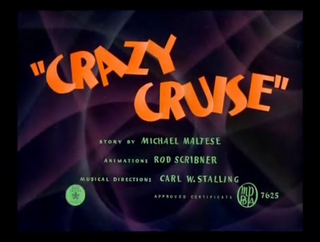
Crazy Cruise is a 1942 Warner Bros. Merrie Melodies cartoon. The short was released on March 14, 1942.
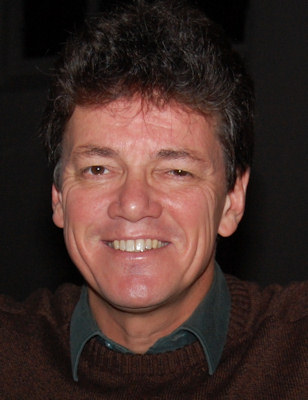
Willie Smits is a trained forester, a microbiologist, conservationist, animal welfare activist, wilderness engineer and social entrepreneur. He has lived in Indonesia since 1985 and is an Indonesian citizen. He is married to Adrienne C. Watson since March 2016.
"Assume a can opener" is a catchphrase used to mock economists and other theorists who base their conclusions on unjustified or oversimplified assumptions.

The watermelon stereotype is an anti-Black racist trope originating in the Southern United States. It first arose as a backlash against African-American emancipation and economic self-sufficiency in the late 1860s.
Elroy Schwartz was an American comedy and television writer.












